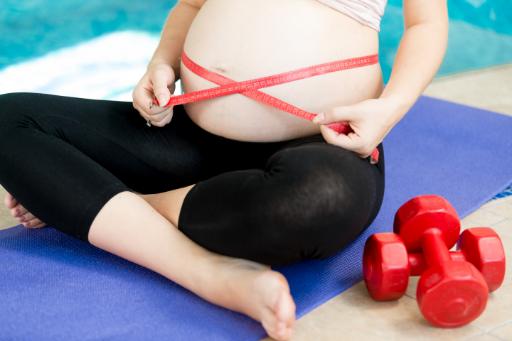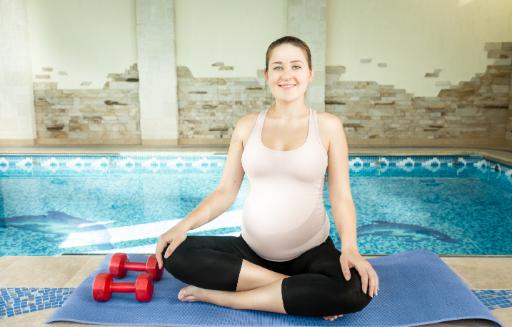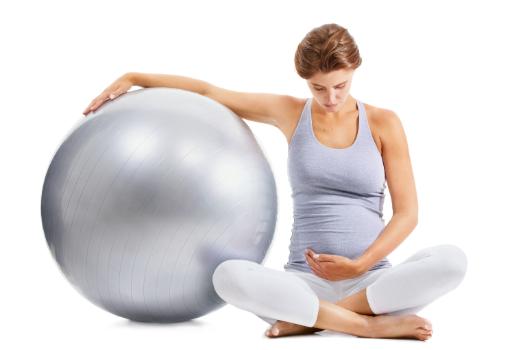Are you looking for a fun and beneficial exercise during your pregnancy? If so, you might want to consider swimming in a pool. Swimming is one of the safest forms of exercise during pregnancy and can provide numerous benefits for both you and your baby, such as:
- Improving muscle strength and tone
- Enhancing cardiovascular health
- Reducing swelling and fluid retention
- Promoting relaxation and stress relief
In this blog post, we’ll show you how to perform some prenatal pool exercises that can help you stay fit and healthy during pregnancy. We’ll cover three types of exercises: prenatal ab exercises, prenatal core exercises, and prenatal ball exercises. We’ll also share some safety tips and benefits of swimming during pregnancy.
Prenatal Ab Exercises
Prenatal ab exercises are designed to strengthen your abdominal muscles without putting too much pressure on your spine or pelvis. Prenatal ab exercises can help you improve your posture, balance, and core stability, as well as prepare you for labor and delivery.

Some examples of prenatal ab exercises are:
- Plank: This exercise helps strengthen your entire core, which includes your abdominal muscles, back muscles, pelvic floor muscles, and glutes. It can help you improve your posture, balance, stability, and endurance, as well as support your growing belly and baby.
- Side plank: This exercise helps target your oblique muscles, which are located on the sides of your abdomen. It can help you improve your lateral stability, coordination, and flexibility.
- Bird dog: This exercise helps challenge your core muscles to maintain a stable position while moving from side to side. It can help you improve your balance, coordination, and agility.
- Superman: This exercise helps stretch and strengthen your lower back and abdominal muscles. It can help you improve your posture, flexibility, and mobility.
Prenatal Core Exercises
Prenatal core exercises are designed to strengthen your entire core, which includes your abdominal muscles, back muscles, pelvic floor muscles, and glutes. Prenatal core exercises can help you improve your posture, balance, stability, and endurance, as well as support your growing belly and baby.

Some examples of prenatal core exercises are:
- Modified freestyle stroke: This exercise helps strengthen your core and improve your cardiovascular health by using a swimming pool.
- Water aerobics exercises: These exercises help enhance your flexibility, mobility, and coordination by using water resistance.
- Kicking and leg exercises: These exercises help prepare you for labor and delivery by stimulating your baby’s movement and strengthening your pelvic floor muscles.
- Arm and shoulder exercises: These exercises help improve your posture, balance, and stability by using a water-resistant ball or a swimming pool.
- Back and core strengthening exercises: These exercises help improve your posture, balance, stability, and endurance by using a water-resistant ball or a swimming pool.
Prenatal Ball Exercises
Prenatal ball exercises are designed to use a water-resistant ball to enhance your strength, flexibility, mobility, and coordination. Prenatal ball exercises can help you improve your posture, balance, stability, and endurance, as well as challenge your muscles in new ways.

Some examples of prenatal ball exercises are:
- Wall squat: This exercise helps strengthen your core and improve your hip stability by using a ball as support.
- Ab crunch: This exercise helps stretch and strengthen your lower back and abdominal muscles by using a ball instead of lying on your back.
- Pelvic floor exercises: These exercises help prepare you for labor and delivery by stimulating your baby’s movement and strengthening your pelvic floor muscles.
- Ball bridges: This exercise helps improve your posture, flexibility, and mobility by using a ball to support your lower back and glutes.
Prenatal Exercises To Avoid
Exercise is generally safe and beneficial during pregnancy, but there are some exercises that you should avoid to prevent injury or complications. According to the American College of Obstetricians and Gynecologists (ACOG), you should avoid the following types of exercises during pregnancy:

- Exercises that involve a high risk of falling, such as skiing, horseback riding, gymnastics, or cycling on uneven terrain.
- Exercises that involve contact or collision, such as soccer, basketball, hockey, or boxing.
- Exercises that involve lying flat on your back for a long time, especially after the first trimester, as this can reduce blood flow to your uterus and baby.
- Exercises that involve holding your breath, such as diving, scuba diving, or some yoga poses.
- Exercises that involve extreme heat or humidity, such as hot yoga or sauna, as this can cause dehydration and overheating.
Some other exercises that you may want to avoid or modify during pregnancy are:
- Exercises that involve twisting or turning your abdomen, such as sit-ups, crunches, or oblique exercises.
- Exercises that involve jumping, bouncing, or sudden changes of direction, such as jumping jacks, burpees, or sprinting.
- Exercises that involve lifting heavy weights or straining your muscles, such as powerlifting, bodybuilding, or CrossFit.
- Exercises that involve stretching beyond your normal range of motion, such as splits, deep lunges, or backbends.
The best exercises to do during pregnancy are low-impact, moderate-intensity, and aerobic, such as walking, swimming, water aerobics, prenatal yoga, or prenatal Pilates. These exercises can help you improve your cardiovascular health, muscle strength, flexibility, and mood, as well as prepare you for labor and delivery.
Before starting any exercise program during pregnancy, you should consult with your doctor and listen to your body. If you experience any warning signs, such as chest pain, shortness of breath, bleeding, contractions, or decreased fetal movement, you should stop exercising and seek medical attention.
Safety Tips for Prenatal Swimming
Before you start swimming during pregnancy, here are some safety tips to keep in mind:
- Consult with your healthcare provider before starting any exercise routine, including prenatal swimming.
- Choose a reputable swimming facility that is safe, clean, and comfortable for you.
- Use proper swimming gear such as a supportive swimsuit or belly band.
- Stay hydrated by drinking plenty of water before, during, and after swimming.
- Listen to your body and adjust your workout accordingly.
Swimming during pregnancy can be a fun and beneficial exercise that can help you stay fit and healthy throughout your pregnancy. By following these prenatal pool exercises, you can enjoy the benefits of swimming while also supporting yourself and your baby.







